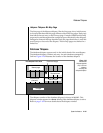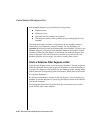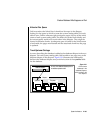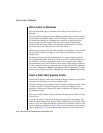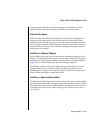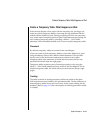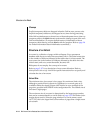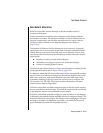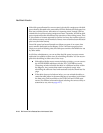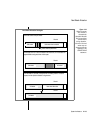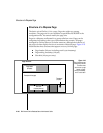
2-114 IBM Informix OnLine Database Server Administrator’s Guide
Structure of an Extent
Cleanup
Explicit temporary tables are dropped when the OnLine user process exits.
Implicit temporary tables may be dropped at any time during processing.
If the OnLine database server shuts down without adequate time to clean up
temporary tables, the tbinit daemon performs the cleanup as part of the next
OnLine initialization. (To request shared-memory initialization without
temporary table cleanup, execute tbinit with the -p option. Refer to page 2-8
for further information about initialization commands.)
Structure of an Extent
An extent is a collection of pages within a dbspace. Every permanent
database table has two extent sizes associated with it. The initial extent size
is the number of kilobytes allocated to the table when it is first created. The
next extent size is the number of kilobytes allocated to the table when the
initial extent, and every extent thereafter, becomes full.
Blobspaces do not employ the concept of an extent.
Refer to page 2-117 for a description of next extent allocation. Refer to
IBM Informix Guide to SQL: Tutorial for specific instructions how to specify and
calculate the size of an extent.
Extent Size
The minimum size of an extent is four pages. No maximum limit exists,
although a practical limit is about two gigabytes (or as much space as is
available within the chunk). Extent sizes must be an even multiple of the
page size, specified as BUFFSIZE in the configuration file. The default size of
an extent is eight pages.
The maximum size of an extent is determined by the largest page number
that can be accommodated in a rowid. (Refer to page 2-123 for further infor-
mation about rowids.) Since the page number in a rowid cannot exceed
16,777,215, this is the upper limit of the number of pages that a single extent
can contain.




